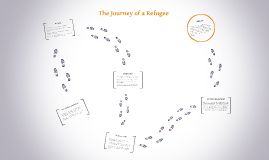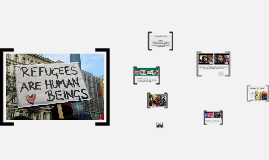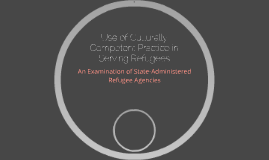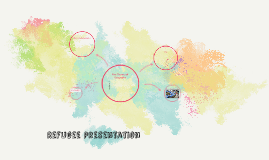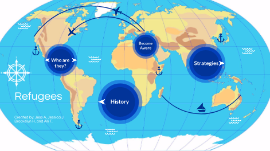Refugee Presentation
Transcript: Do state-administered refugee agencies from the five states that received the highest number of refugees in 2012 provide culturally competent services to their refugee clients in accordance with the NASW guidelines? •1950’s:Assimilation- “melting pot concept”- lack of respect for differences • 1960’s-70’s: Cultural, Economic & Political Movements •2000’s:Increase in hate crimes sensitization of social work students to issues of diversity Refugee Presentation Data Collection Methods- Recruitment/Sampling Measurement Agencies assessed based on five categories: • Staff and policy attitudes • Services • Assessment of agency’s relationship with the refugee populations they serve • Culturally-sensitive training • Evaluation Recruiting Strategies Introductory Telephone Calls Mailed Surveys With Cover Letters Mailed Follow-Up Letters and Surveys Implications OUR SAMPLE The 5 State-Administered Refugee Agencies That Received the Largest Number of Refugees in 2012: 1. California - 5,183 refugees 2. Michigan - 3,600 refugees 3. Pennsylvania - 2,813 refugees 4. Georgia - 2,516 refugees 5. Florida - 2,249 refugees (Prah, 2013). What is Cultural Competency? Number of refugees 2011 Lucy Chen Bianca Gras Fedia Louis Danielle Restieaux Research Question Methods- Analysis Background Methods - Recruitment / Sampling As diversity in the populations social workers serve increases, there is a growing need and appreciation for social workers to awareness and deeper understanding of the roles of race/ethnicity, language, gender, sexual orientation and even mental illnesses play in their interactions with clients. Although, the CSWE & NSAW has come mandated standards & with a checklist of cultural competence, there is limited literature on the implementation and application of cultural competence. Our research implicate the need to scientifically measure the implementation of cultural competence within the social work practice. Ultimately, any effect upon culturally aware practice will be determined by the quality of elaboration of the mandated characteristics. There are also several methodological issues, and the checklist list itself might be considered as not encompassing enough. The five general categories might not be sufficient, and the checklist itself doesn't provide any information on reliability. There's no way to way to know if agencies will continue to provide high/low quality services based on their scores from the checklist Agenda • Survey comprised of yes-no questions, Likert scale questions, semantic differential questions, multiple choice questions, open-ended questions • Close-ended questions – Gathers general data about agency • Open-ended questions – Gathers data about agency’s understanding, training, implementations of cultural competency State-Administered Refugee Agency Cultural Competence Checklist Background Research Question Methods -univariate analysis -how data will be coded -include and explain tables (will expand in Prezi)






